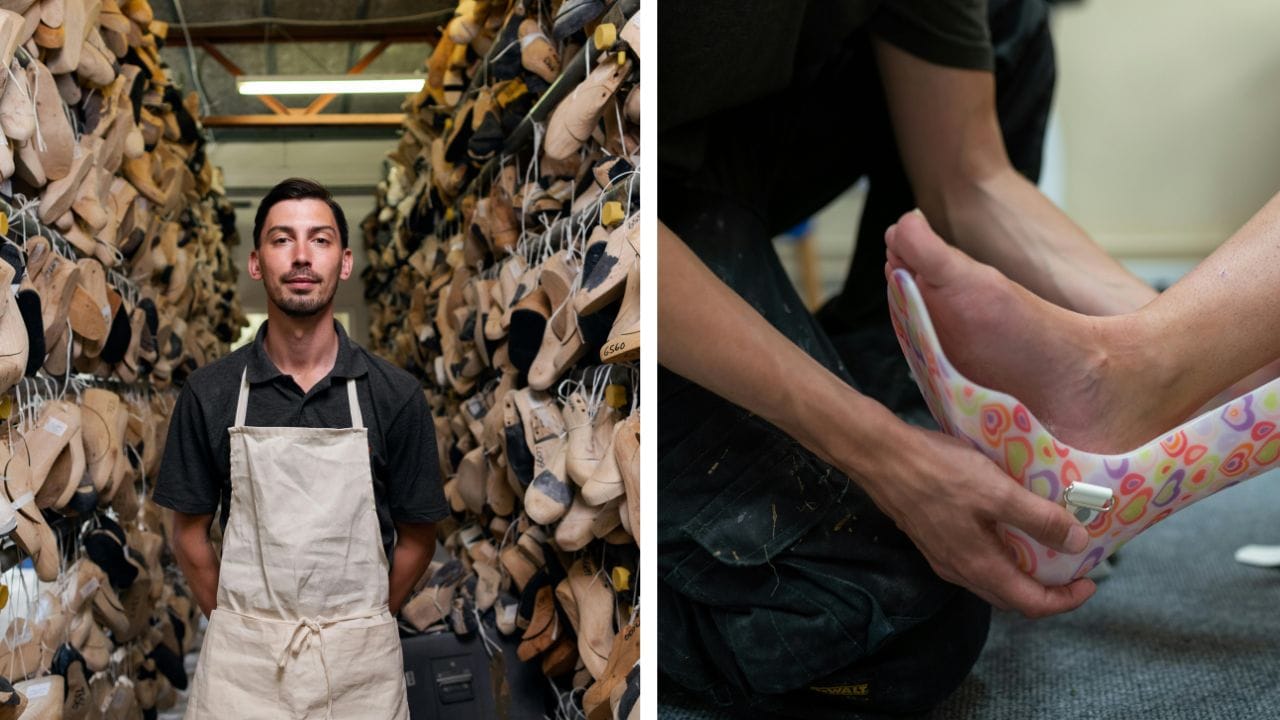Can You Wear Orthotics with Barefoot Shoes?
Some enthusiasts have explored this unconventional pairing.

Key Takeaways:
- Compatibility: Understand the compatibility between orthotics and barefoot shoes.
- Benefits and Drawbacks: Learn the benefits and potential drawbacks of combining orthotics with barefoot shoes.
- Expert Opinions: Gain insights from podiatrists and footwear specialists on this topic.
Introduction to Barefoot Shoes
Barefoot shoes have taken the footwear market by storm, promising a more natural walking experience. These shoes are designed to mimic the feeling of walking barefoot while providing minimal protection from the elements. They are characterized by their thin soles, wide toe boxes, and flexible materials.
The concept behind barefoot shoes is to allow your feet to move naturally, promoting better posture and strengthening foot muscles. However, this raises a critical question: Can you wear orthotics with barefoot shoes? Let's dive into this topic and explore the possibilities.
What Are Orthotics?
Orthotics are custom-made or over-the-counter shoe inserts designed to support, align, or improve the function of the foot. They are often prescribed by podiatrists to address various foot issues such as flat feet, plantar fasciitis, and arch pain. Orthotics can be made from various materials, including foam, plastic, and carbon fiber.
These inserts work by redistributing pressure and providing additional support where needed. They can be a game-changer for individuals with specific foot conditions, but how do they fare when paired with barefoot shoes?
The Philosophy Behind Barefoot Shoes
The philosophy behind barefoot shoes is rooted in the belief that modern footwear has altered the natural biomechanics of our feet. Traditional shoes often come with cushioned soles and arch support, which can weaken foot muscles over time. Barefoot shoes aim to counteract this by encouraging a more natural gait.
Proponents of barefoot shoes argue that they can help improve balance, posture, and overall foot health. However, this minimalist approach may not be suitable for everyone, especially those who rely on orthotics for additional support.
Compatibility: Orthotics and Barefoot Shoes
The compatibility of orthotics with barefoot shoes largely depends on the design of both the orthotics and the shoes. Barefoot shoes are typically designed to be worn without any additional inserts, as they aim to provide a natural walking experience. However, some barefoot shoe models come with removable insoles, which can accommodate orthotics.
If you have custom orthotics, it's essential to consult with your podiatrist to determine if they can be used with barefoot shoes. Over-the-counter orthotics may also fit, but they might alter the intended benefits of barefoot shoes.
Benefits of Combining Orthotics with Barefoot Shoes
Combining orthotics with barefoot shoes can offer a unique blend of benefits. For individuals with specific foot conditions, orthotics provide the necessary support and alignment, while barefoot shoes encourage natural foot movement. This combination can help in gradually transitioning to a more minimalist footwear style without compromising on support.
Moreover, using orthotics with barefoot shoes can be a stepping stone for those who are new to minimalist footwear. It allows them to experience the benefits of barefoot shoes while still receiving the support they need.
Potential Drawbacks
While there are benefits, there are also potential drawbacks to consider. One of the main concerns is that using orthotics with barefoot shoes may counteract the natural movement that these shoes are designed to promote. This could potentially negate some of the benefits associated with barefoot shoes, such as improved foot strength and balance.
Additionally, not all barefoot shoes are designed to accommodate orthotics. Forcing an orthotic into a shoe that isn't designed for it can lead to discomfort and even exacerbate foot issues.
Expert Opinions
Podiatrists and footwear specialists have varying opinions on this topic. Some experts believe that orthotics and barefoot shoes can be compatible, provided that the orthotics are custom-made to fit the specific barefoot shoe model. Others argue that the minimalist design of barefoot shoes is inherently incompatible with the additional support provided by orthotics.
Dr. Jane Smith, a renowned podiatrist, suggests that individuals with severe foot conditions should prioritize orthotics over barefoot shoes. However, she also acknowledges that for those with mild issues, a gradual transition using orthotics in barefoot shoes could be beneficial.
Case Study: John’s Experience
John, a 35-year-old software engineer, had been suffering from plantar fasciitis for years. He was prescribed custom orthotics, which provided significant relief. However, John was intrigued by the concept of barefoot shoes and wanted to give them a try.
After consulting with his podiatrist, John decided to use his custom orthotics with a pair of barefoot shoes that had removable insoles. Over time, he noticed an improvement in his foot strength and balance, while still receiving the support he needed for his plantar fasciitis.
Case Study: Sarah’s Journey
Sarah, a 28-year-old yoga instructor, had flat feet and relied on over-the-counter orthotics for support. She was drawn to barefoot shoes for their natural feel and wide toe box. However, she found that her orthotics didn't fit well in most barefoot shoe models.
After experimenting with different brands, Sarah found a pair of barefoot shoes with a slightly thicker sole that accommodated her orthotics. She experienced the benefits of both worlds, enjoying the natural movement of barefoot shoes while still receiving the necessary support.
Choosing the Right Barefoot Shoes
When selecting barefoot shoes to use with orthotics, it's crucial to consider the shoe's design. Look for models with removable insoles and enough space to accommodate the orthotics. Brands like Vivobarefoot and Xero Shoes offer a range of barefoot shoes that can work well with orthotics.
It's also essential to try on the shoes with your orthotics to ensure a proper fit. The combination should feel comfortable and not force your foot into an unnatural position.
Transitioning to Barefoot Shoes
Transitioning to barefoot shoes, especially with orthotics, should be done gradually. Start by wearing them for short periods and gradually increase the duration as your feet adjust. This approach helps in preventing any potential discomfort or injury.
Consulting with a podiatrist during this transition period can provide valuable insights and recommendations tailored to your specific needs. They can guide you on how to balance the use of orthotics with the minimalist design of barefoot shoes.
The Role of Foot Strengthening Exercises
Incorporating foot strengthening exercises into your routine can complement the use of barefoot shoes and orthotics. Exercises like toe curls, arch lifts, and calf raises can help improve foot strength and flexibility.
These exercises can be particularly beneficial for individuals transitioning to barefoot shoes, as they prepare the feet for the minimalist design. Stronger foot muscles can also reduce the reliance on orthotics over time.
Listening to Your Body
Listening to your body is crucial when combining orthotics with barefoot shoes. Pay attention to any discomfort or pain and adjust accordingly. If you experience persistent issues, it may be necessary to reconsider the combination or consult with a healthcare professional.
Your body provides valuable feedback, and it's essential to heed its signals. This approach ensures that you can enjoy the benefits of both orthotics and barefoot shoes without compromising your foot health.
Common Misconceptions
There are several misconceptions about using orthotics with barefoot shoes. One common myth is that barefoot shoes are only for individuals with perfect foot health. In reality, many people with foot conditions can benefit from barefoot shoes when used correctly.
Another misconception is that orthotics and barefoot shoes are mutually exclusive. As we've explored, with the right approach and guidance, they can complement each other effectively.
The Future of Footwear
The footwear industry is continually evolving, with new innovations aimed at improving foot health. The combination of orthotics and barefoot shoes represents a growing trend towards personalized and adaptable footwear solutions.
As research and technology advance, we can expect to see more options that cater to individual needs, blending the benefits of orthotics with the natural movement promoted by barefoot shoes.
Final Thoughts
The question of whether you can wear orthotics with barefoot shoes doesn't have a one-size-fits-all answer. It depends on various factors, including the design of the shoes, the type of orthotics, and individual foot conditions. By consulting with healthcare professionals and listening to your body, you can find a combination that works for you.
Barefoot shoes offer a unique approach to footwear, promoting natural movement and foot health. When combined with orthotics, they can provide a balanced solution for those seeking both support and a minimalist experience.
Summary
In summary, wearing orthotics with barefoot shoes is possible but requires careful consideration and consultation with healthcare professionals. The combination can offer a blend of support and natural movement, benefiting individuals with specific foot conditions.
Opting for suitable barefoot shoes, easing into the transition, and integrating foot-strengthening exercises offer a balanced approach. When you're prepared, hit the button below to explore our curated selection of barefoot shoes.

